Posts Tagged ‘Category Design’
244 Digital and Analog Businesses with Robert Siegel, VC and Author of “The Brains and the Brawn Company”
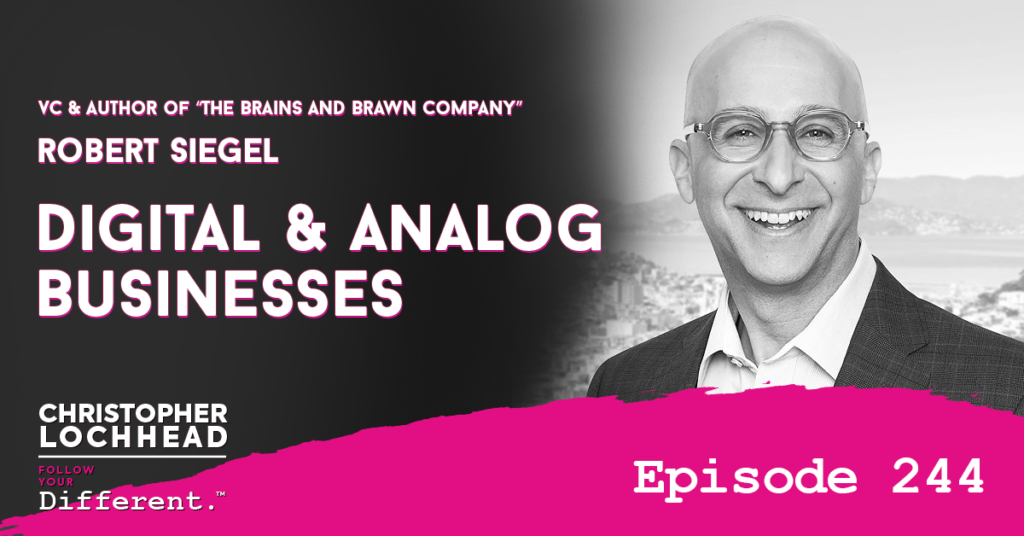
Podcast: Play in new window | Download (Duration: 1:12:09 — 49.5MB) | Embed
Subscribe: Apple Podcasts | Spotify | Pandora | RSS | More
Most businesses are now a hybrid of analog and digital. The question is, how do we get the right mix? Also, how do we know what and when to digitally transform, or keep parts of our business analog? These are just some of the questions that board CEOs and executive teams are grappling with. In this episode of Follow your Different, Robert Siegel will help us get a better grasp at it.
Robert Siegel is a Venture Capitalist and a Stanford lecturer. He has a new book out called The Brains and Brawn Company, and it cracks open many of these kinds of questions. It also provides real research and insight from leading companies in their respective industries, coupled with Robert’s years in Silicon Valley and the entrepreneurial world.
If you’re building companies today, or you want to build a legendary company heading into the future, you’re going to love everything about our dialogue.
Robert Siegel on Digital Transformation
Digital Transformation seems to have become a catch-all phrase that people in the industry use to describe new technology or migrating certain things online.
While it may not seem like much of an issue. It becomes a problem when the supposed “experts” start suggesting that undergoing a Digital Transformation should be done ASAP to improve your company.
“I think that what I’ve learned in my time as a venture capitalist, and also in the teaching that I do at Stanford, is that digital transformation is kind of necessary, but not sufficient. That the world that we’re living in, is increasingly a blend of digital and physical.
And so if you only talk about digital transformation, everything talks about the ones and zeros. Everyone talks about software and connectivity. But people forget, we actually live in a physical world.” – Robert Siegel
The Brain and Brawn Company
We then get into the discussion of Robert’s new book, The Brain and Brawn Company. Robert explains that having both Brain and Brawns is necessary for a company. The Brain being the creative and analytical aspects of business, as well as the digital parts of it. While the Brawn is the physical aspects, like dealing with logistics, manufacturing, and such.
So the optimal setup is having a good mix of “brains” and “brawn” in your company. According to Robert, they don’t deal with those who wish to have a pure digital software platform, because that is not a sustainable model.
“Those companies aren’t going to be successful as we get into a world where things are increasingly blended between digital and physical, and every product and service that we make is connected. And every industry is going to be impacted from not only things like mobility, but healthcare, financial services, there really is education, there isn’t an industry that won’t be impacted by this blend of digital and physical.” – Robert Siegel
Of course, there are business that can go pure digital, but companies in general still need a good blend of digital and analog systems in place to function efficiently.
The Right Mix of Digital and Analog
That said, what is a good mix of digital and analog for a business?
According to Robert, it depends for each business. One of the things to look at is how different systems work in your company. After understanding them, find out if going digital can improve the service, or make it more efficient in the long run.
Of course, there are certain aspects that still need analog aspects, even within digital spaces. Take for instance ordering online. While the whole thing can be made digital nowadays, there are still analog competencies like logistics and customer experience that need to be accounted for. Or the opposite can also be true, like adding digital improvements to delivery tracking, so that customers know the real-time location of their on-going delivery.
So in the end, it’s best to find the right mix for your own company.
To hear more from Robert Siegel and how to find the right mix of digital and analog in your business, download and listen to this episode.
Bio
Robert Siegel is a lecturer in management and has led primary research and written cases on Google, Charles Schwab, Daimler, AB InBev, Box, Stripe, Target, AngelListopen, 23andMe, C3.ai, Majid Al Futtaim, Tableau, PayPal, SurveyMonkey, Medium, Autodesk, Minted, Zuora, Axel Springer, and Michelin, amongst others.
Robert is a member of the supervisory board of TTTech Auto AGopen, and is chairman of the strategic advisory board for TTTech Computertechnik AGopen in Vienna, Austria. He is a member of the industry advisory boards for HERE Technologiesopen and Tulcoopen, and is the copresident emeritus of Stanford Angels & Entrepreneursopen, an alumni association that fosters relationships to strengthen the Stanford startup community. Robert was on the board of SmartDrive Systemsopen for 14 years (acquired by Omnitracs), has coauthored several articles for the Harvard Business Reviewopen and California Management Reviewopen, and is a frequent contributor to Fortune, TechCrunch, VentureBeat and Forbes.
Robert was previously general manager of the video and software solutions division for GE Security, with annual revenues of $350 million. He was also executive vice president of Pixim, Inc., a fabless semiconductor firm specializing in image sensors and processors (acquired by Sony). Before Pixim, Robert was cofounder & chief executive officer of Weave Innovations Inc. (acquired by Kodak), a network services developer that invented the world’s first digital picture frame, and delivered photos and other digital media to PCs and internet / mobile devices.
Robert served in various management roles at Intel Corporation, including an executive position on their corporate business development team, in which he invested capital in startups that were strategically aligned with Intel’s vision.
Robert is the coinventor of four patents and served as lead researcher for Andy Grove’s best-selling book, Only the Paranoid Survive.
Robert holds a BA from UC Berkeley and an MBA from Stanford Graduate School of Business. He is married with three children.
Links
Follow Robert Siegel today!
Website: RobertESiegel.com
LinkedIn: in/RSiegel
Twitter: @RobSiegel
Read his new book: The Brains and Brawn Company
We hope you enjoyed this episode of Follow Your Different™! Christopher loves hearing from his listeners. Feel free to email him, connect on Facebook, Twitter, Instagram, and subscribe on iTunes!
220 Think Like Amazon with John Rossman
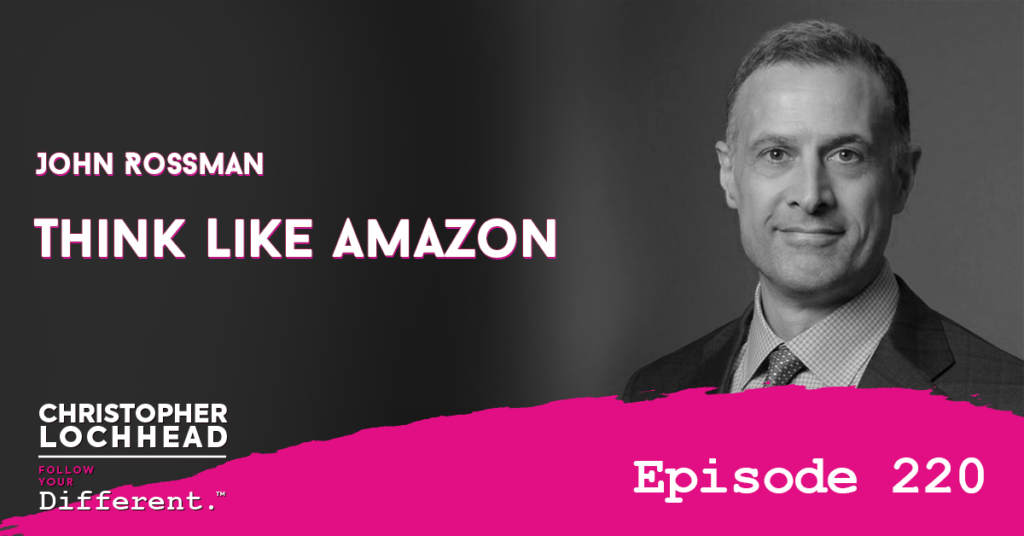
Podcast: Play in new window | Download (Duration: 1:01:35 — 42.3MB) | Embed
Subscribe: Apple Podcasts | Spotify | Pandora | RSS | More
In 2020, Amazon.com became an essential service in America. The company is now worth $1.6 trillion, and has become one of the greatest B2B companies in history, the Category King of E-commerce. Amazon Web Services is also the fastest growing B2B tech company ever.
It’s shocking that one company is dominating on both the consumer and enterprise technology side in a way that we’ve never seen one company do before.
On this episode of Follow Your Different, our guest today is the expert on the Amazon Way. As a matter of fact, he wrote the book on it. John Rossman is an extraordinarily sought-after author, speaker, and thinker in business, because he is teaching all of us how to be like Amazon.
John Rossman is the author of The Amazon Way, a former Amazon Leader and Managing Partner at Rossman Partners. In his new book, John breaks down the Amazon leadership principles and how we can learn to innovate and compete in the digital era. So if you’re interested in learning more, you’ll love everything about this conversation.
Compete Differently
John Rossman shares what his inspiration was to making the book. For him, it was a matter of getting the word out and letting people know what you can learn from Amazon’s business strategies. You can then use these to incorporate into your business culture and leadership approach so you can better compete in the market.
“That’s kind of the fair way that I play. And I just love the notion of like, we got to compete differently and that is what you Amazon is teaching us. That’s what I try to take away and give to my readers.” – John Rossman
The American Story
John talks about a bit of history on how Amazon came to be, and thinks that it doesn’t get highlighted enough that Amazon and Jeff Bezos is the American Story people aspire to have. He’s someone who bet on himself, left his cushy job and went all in on his idea.
It took Amazon literally two decades to become the juggernaut we know them to be right now, and it was not without its problems. Though despite these problems, Amazon continued to push on and in these bad times came the leadership principles that they continue to follow to this day.
“Those are the leadership lessons I learned so much from and his consistency in beliefs, like them or not, at least they’re consistent, and they’re super well-articulated. And so I think that that is a big story that that doesn’t get told enough.” – John Rossman
Pushing On Despite Criticisms
John recalls how it was like in the early 2000s, particularly on how media and the public perceived Amazon. Other entrepreneurs and business leaders didn’t believe that they could succeed, and they were always doubted.
Yet when you look at Amazon today, it’s as though it is an essential service for everyone. That’s saying a lot for something that is owned by a private entity.
He also shares how Amazon handled the situation once the pandemic hit. Unlike other businesses and services that bided its time and waited, Amazon focused their attention on how to deliver the best service they could despite the on-going situation.
To say it paid off would be the understatement of the year.
“All you remember the days of like, the grocery store shelves being barren and everything, right? Amazon was the answer, dude on toilet paper for Fox, and food and things like that. They did an amazing job at quickly shifting, and the thing I was pointing out to everybody is like, it didn’t happen by accident.” – John Rossman
To hear more from John Rossman and on how your business can be like Amazon, download and listen to this episode.
Bio
John Rossman
Digital and Innovation Advisor
Mr. Rossman is an expert at digital business models, operations and organizing programs. He has led engagements on developing innovation processes, Internet of Things strategies, marketplace and API driven platform business models.
He is a sought-after speaker on creating a culture of operational excellence and innovation.
Mr. Rossman has worked with clients across various industries, including retail, insurance, education, healthcare, consumer products, industrial products and transportation.
Mr. Rossman’s notable assignments include The Bill and Melinda Gates Foundation, Microsoft, Nordstrom and several of the world’s leading retail and insurance organizations.
Prior to Rossman Partners, John was a Managing Director at Alvarez and Marsal, a performance improvement consulting firm.
Prior to A&M, John was an executive at Amazon.com where he launched the Marketplace business and third-party selling platform, and ran the merchant services business.
Links
Connect with John!
Website: The-Amazon-Way.com
LinkedIn: in/John-Rossman
Twitter: @JohnERossman
Get the Book: The Amazon Way: Amazon’s 14 Leadership Principles
We hope you enjoyed this episode of Follow Your Different™! Christopher loves hearing from his listeners. Feel free to email him, connect on Facebook, Twitter, Instagram, and subscribe on iTunes!
084 Creating a Category? Do NOT listen to customers
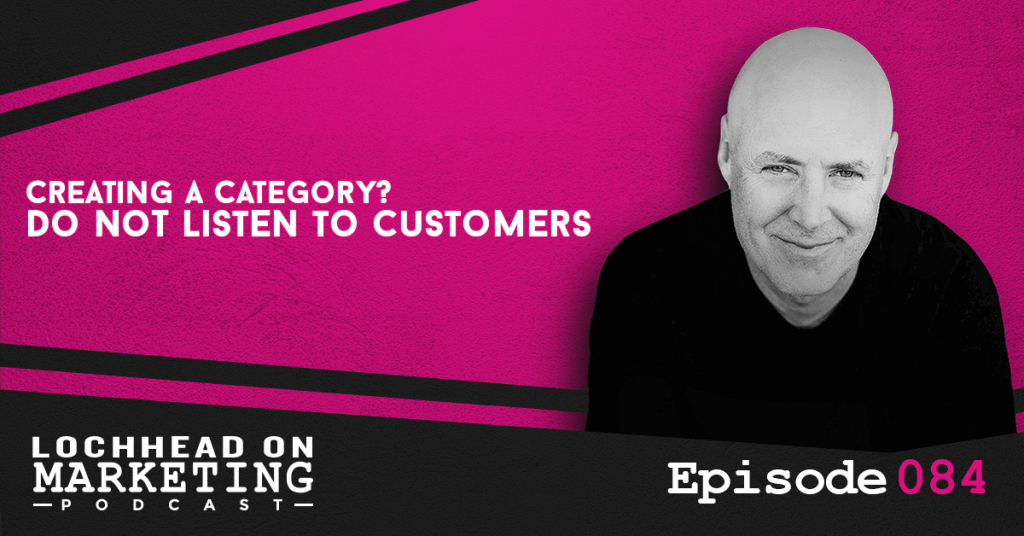
Podcast (lochheadonmarketing): Play in new window | Download (Duration: 5:23 — 3.7MB) | Embed
Subscribe: Apple Podcasts | Spotify | RSS | More
In this episode, let’s talk about why, when you’re designing a new category, you need to be very careful who you listen to. Often times, listening to customers is the worst thing you can do.
Whose Feedback Matters?
Christopher shares one of the things that they discussed in their book Play Bigger, that new categories are often only obvious in hindsight. He further advises that if you’re designing a new category, it’s critical to be very, very careful whose feedback you listen to.
“You don’t never forget. Nobody wanted a horseless carriage, never forget.” – Christopher Lochhead
Breakthrough in Hindsight
We should not listen to customers and most people, when we’re designing a breakthrough because most people can’t see it. Now, when you’re doing incremental things, customer feedback is awesome. But in general, most people cannot see a breakthrough, whether they’re customers, partners, potential employees, or even potential investors.
“You want to talk about your new category in the early stages with people who can engage in what you might think the art of the possible with you.” – Christopher Lochhead
To know more why you should not listen to customers when creating a legendary category, download and listen to this episode.
Bio:
Christopher Lochhead is a #1 Apple podcaster and #1 Amazon bestselling co-author of books: Niche Down and Play Bigger.
He has been an advisor to over 50 venture-backed startups; a former three-time Silicon Valley public company CMO and an entrepreneur.
Furthermore, he has been called “one of the best minds in marketing” by The Marketing Journal, a “Human Exclamation Point” by Fast Company, a “quasar” by NBA legend Bill Walton and “off-putting to some” by The Economist.
In addition, he served as a chief marketing officer of software juggernaut Mercury Interactive.
Hewlett-Packard acquired the company in 2006, for $4.5 billion. He also co-founded the marketing consulting firm LOCHHEAD; was the founding CMO of Internet consulting firm Scient, and served as head of marketing at the CRM software firm Vantive.
We hope you enjoyed this episode of Lochhead on Marketing™! Christopher loves hearing from his listeners. Feel free to email him, connect on Facebook, Twitter, Instagram, and subscribe on Apple Podcast! You may also subscribe to his newsletter, The Difference, for some amazing content.
082 How Category Designers Do Acquisitions: Why Salesforce/Slack Is a Savvy Deal
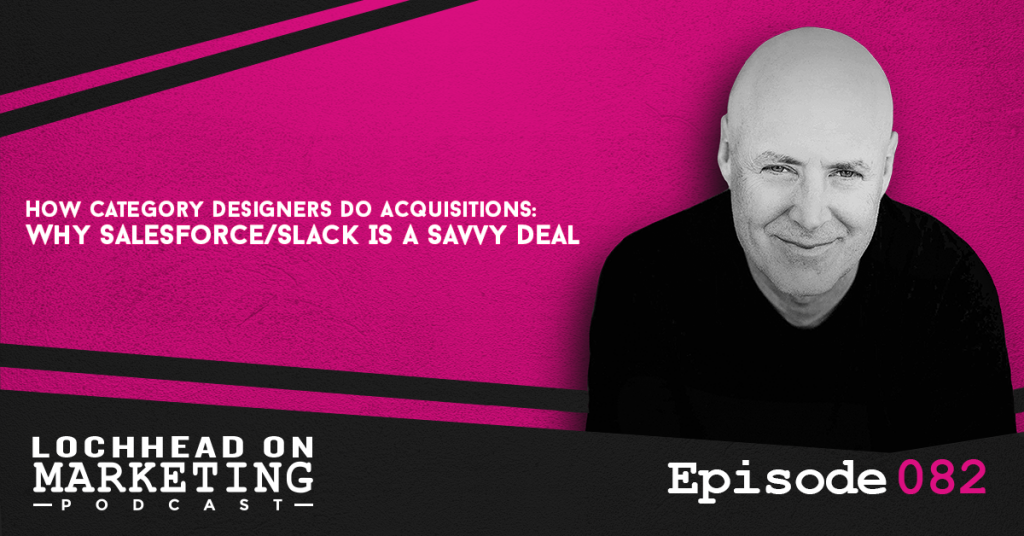
Podcast (lochheadonmarketing): Play in new window | Download (Duration: 13:44 — 9.4MB) | Embed
Subscribe: Apple Podcasts | Spotify | RSS | More
Most people look at acquisitions through a spreadsheet lens. Of course the financials matter for mergers and acquisition deals, but when viewed through a category design lens, acquisitions look very, very different. In this episode, we break down the differences using the Salesforce / Slack Deal as an example and Google purchasing YouTube way back 2006.
Two Types of M&A Deals
First one is category consolidation deals, which is usually done in market categories that are slow or have no growth. The second type of M&A deals are category acceleration deals, which happens in early or high growth market categories.
In line with this, let’s step back in memory lane, October of 2006, when Google purchased YouTube For $1.65B. YouTube was two years old then with just 65 employees. Many experts said predictable things like “how can Google be so stupid” “they paid so much for a company with little revenue, no profits.”
“In 2006, google didn’t buy YouTube’s technology, customers, or revenue or profits. Google was the category queen in Search and they bought the category queen in Video. They bought the #1 position in category. A category with massive potential. Potential, that some others could not see.” – Christopher Lochhead
Youtube: #2 Search Engine In The World
Legendary new categories are often obvious to most people, in hindsight. To put a fine point on this one: in 2019 YouTube did $15B in Ad sales. Google made a category acceleration deal. They redesigned part of the category landscape on the internet and they’ve been benefiting as a result ever since then
“Think of what could have happened to Google if Microsoft, Yahoo, Disney or someone else owned Youtube? As Internet categories were getting designed and redesigned, without YouTube, Google could have found its ass on the floor in the game of category musical chairs.” – Christopher Lochhead
Salesforce $28 billion Deal To Buy Slack
After Salesforce bought Slack for $28billion, their stock got hammered down to 11%. In fact, headline of MarketWatch.com is: Salesforce stock drops as Wall Street questions necessity of Slack purchase.
“Now there is an epic mega category battle going down for the new distributed, digital workplace. Here’s what they don’t get…Salesforce just increased their odd in this epic category battle.” – Christopher Lochhead
To know more about How Category Designers Do Acquisitions: Why Salesforce/Slack Is a Savvy Deal, download and listen to this episode.
Bio:
Christopher Lochhead is a #1 Apple podcaster and #1 Amazon bestselling co-author of books: Niche Down and Play Bigger.
He has been an advisor to over 50 venture-backed startups; a former three-time Silicon Valley public company CMO and an entrepreneur.
Furthermore, he has been called “one of the best minds in marketing” by The Marketing Journal, a “Human Exclamation Point” by Fast Company, a “quasar” by NBA legend Bill Walton and “off-putting to some” by The Economist.
In addition, he served as a chief marketing officer of software juggernaut Mercury Interactive. Hewlett-Packard acquired the company in 2006, for $4.5 billion.
He also co-founded the marketing consulting firm LOCHHEAD; was the founding CMO of Internet consulting firm Scient, and served as head of marketing at the CRM software firm Vantive.
Links:
Salesforce acquires Slack for over $27 billion, marking cloud software vendor’s largest deal ever
Salesforce to Acquire Slack for $27.7 Billion
Google to buy YouTube for $1.65 billion in stock
A Decade Ago, Google Bought YouTube — and It Was the Best Tech Deal Ever
Google buys YouTube for $1.65 billion
We hope you enjoyed this episode of Lochhead on Marketing™! Christopher loves hearing from his listeners. Feel free to email him, connect on Facebook, Twitter, Instagram, and subscribe on Apple Podcast! You may also subscribe to his newsletter, The Difference, for some amazing content.
079 How To Be A Legendary CMO w/ Dave Gerhardt
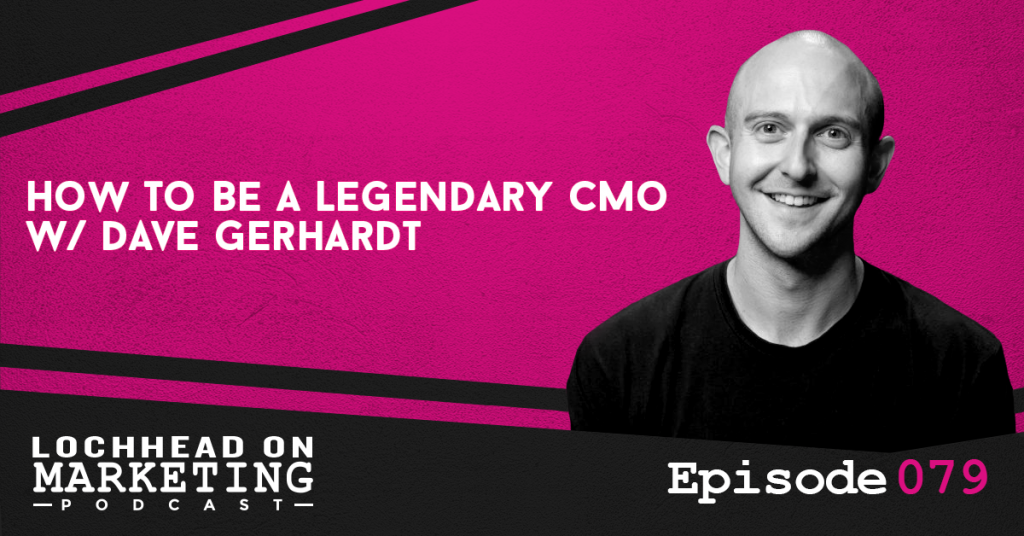
Podcast (lochheadonmarketing): Play in new window | Download (Duration: 1:12:13 — 49.6MB) | Embed
Subscribe: Apple Podcasts | Spotify | RSS | More
In this episode, one of the most high profile CMOs in the tech world, Dave Gearhart, aka DG, CMO of Privy is here. We have a fantastic conversation from marketing, planning to category, design, and more. Christopher recently guested on his podcast, which is called B2B Marketing Leaders. In a lot of ways, this conversation is a continuation of that conversation. It’s one younger CMO with one older CMO, we’ll let you decide who’s who. He’s also got an awesome new marketing group on Facebook called Digi MG. To know more about how to be a legendary CMO, download and listen to this episode.Bio:
Dave Gerhardt is a B2B marketing leader & widely regarded as one of today’s leading brand builders. Prior to Privy Dave was VP of Marketing at Drift where he helped the company grow into one of the fastest growing B2B SaaS businesses of all-time. His work has been featured in Forbes, Fortune, Inc., Entrepreneur, TechCrunch, and Harvard Business Review, and he’s the co-author of the definitive book on Conversational Marketing, which was a #1 new release on Amazon in Marketing & Sales and a top 20 business book in the U.S. He lives in Boston with his wife and two kids.Links:
Linkedin: Dave Gerhardt Privy Twitter: @davegerhardt The B2B Marketing Leaders Podcast Patreon: @davegerhardt Privy: Dave Gerhardt We hope you enjoyed this episode of Lochhead on Marketing™! Christopher loves hearing from his listeners. Feel free to email him, connect on Facebook, Twitter,Instagram and subscribe on iTunes! You may also subscribe to his newsletter,The Difference, for some amazing content.185 UnHealthcare: Why The Future is “Health Assurance” | Kevin Maney Bestselling Author / Category Designer
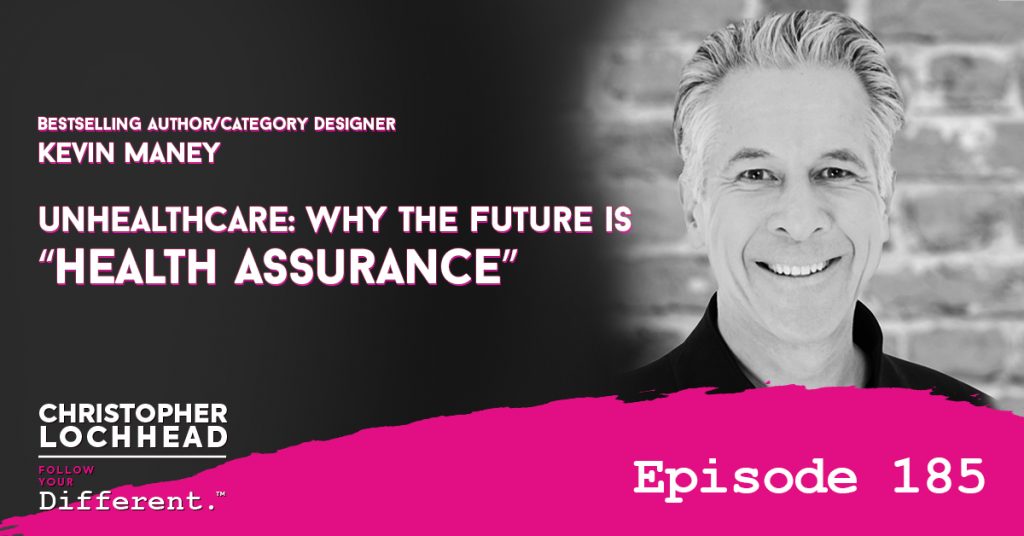
Podcast: Play in new window | Download (Duration: 1:12:40 — 49.9MB) | Embed
Subscribe: Apple Podcasts | Spotify | Pandora | RSS | More
We continue our run on legendary, bestselling authors today with Kevin Maney. Kevin is a technology executive who’s covered tech for over 25 years for outfits like USA Today, Newsweek, and many others. He’s the co-author of my first book: Play Bigger: How Pirates, Dreamers, Innovators Create and Dominate Markets.
Today, we have a fascinating conversation about how technology is driving a massive shift from traditional approaches to health care — which Kevin sort of frames as “sick care”— to a new category that he and his co-authors called health assurance.
Conscious Capitalism
Kevin believes that consumers will start to embrace new and interesting products and services when the pandemic ends. In fact, the VC community and Fortune 500 companies started to realize a massive shift within their policies and are now focusing on conscious capitalism.
“We’re actually embarking on a huge project that has around this idea of, call it what you will, conscious capital of responsible innovation.” – Kevin Maney
From Book to New Category Design
Kevin describes how he got together with Stephen Klasko, the CEO of Jefferson Health, one of the biggest health care systems in the country based in Philadelphia. They took that healthcare chapter of Kevin’s book, Unscaled, to write a manifesto.
The manifesto is about 60 pages long, describing how new technologies can take apart the old healthcare system, which was based on taking care of people after they were sick.
“We actually tried to attempt in this book to literally create a new category of healthcare that we call health assurance.” – Kevin Maney
What Healthcare Has Become
In part, Kevin describes the word healthcare as becoming an industrial complex, in reality, is not a “healthcare system.” He further shares that the system is designed to take care of us after something bad happens to us, not to help us stay healthy. The economic incentives are around doing operations and not keeping us “out of hospitals.”
“We ended up writing about in the book, these health assurance technologies that have been in place before COVID happened. You would have been able to see the patterns happening as it shifts around the globe, in almost real-time. So we ended up redoing the book to reflect all of that.” – Kevin Maney
To learn more about healthcare and why the future calls for health assurance, download and listen to this episode.
Bio:
Kevin Maney is a bestselling author, award-winning columnist, and partner at Category Design Advisors (CDA). He co-authored Play Bigger: How Pirates, Dreamers, and Innovators Create and Dominate Markets, which gave birth to the discipline of category design.
His book The Maverick and His Machine: Thomas Watson Sr. and the Making of IBM is the definitive biography of the man who built IBM.
Maney has been a contributor to Newsweek, Fortune, The Atlantic, Fast Company, Strategy + Business, HBR.com, CNN, and ABC News, among other media outlets.
Additionally, he was a contributing editor at Conde Nast Portfolio during its brief run from 2007 to 2009. For 22 years, Maney was a columnist, editor, and reporter at USA Today.
He’s appeared frequently on television and radio, including CBS Sunday Morning and NPR, and lectures at conferences and universities, including New York University, UNC in Chapel Hill, and his alma mater, Rutgers.
Links:
We hope you enjoyed this episode of Follow Your Different™! Christopher loves hearing from his listeners. Feel free to email him, connect on Facebook, Twitter, Instagram, and subscribe on iTunes! Get amazing, different stories on business, marketing, and life. Subscribe to our newsletter The Difference.
073 Noble Purpose
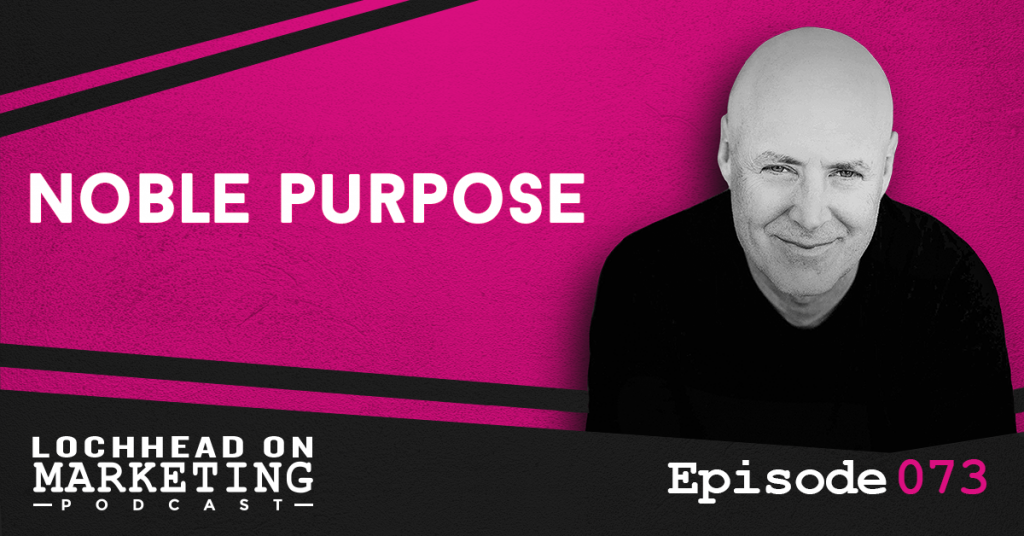
Podcast (lochheadonmarketing): Play in new window | Download (Duration: 11:46 — 8.1MB) | Embed
Subscribe: Apple Podcasts | Spotify | RSS | More
As this theme kept on coming up in Follow Your Different episodes, whether he spoke with entrepreneurs or venture capitalists, Christopher decided to finally talk about the purpose of business. Specifically, he dives into what his friend Gil Spencer calls a noble purpose and how noble purpose can tie to building categories companies brands.
Mission-Driven and Mercenaries
A noble purpose is a cool way of thinking about things that we do hear about in business and entrepreneurship. Sequoia Capital and many others, talks about it a lot. The discussion revolves around this notion of being mission-driven. Are you a mission-driven entrepreneur?
Similarly, Eddie Yoon, who has been a guest many times on my podcasts, shares about the distinction between missionaries and mercenaries.
“People who are on a mission will literally crawl through flaming glass — if that’s even a thing — to achieve their goal because they’re up to something, and no matter how much you pay a mercenary, when the going gets tough, many mercenaries will tap out.” – Christopher Lochhead
What Is Your Noble Purpose?
Chris shares a few more examples of companies and brands and how their noble purpose differentiated them and allowed them to dominate their categories. He spoke about TOM’s shoes. Another example he shares is about Patagonia, which is an environment-based company.
“Regardless of how you think about it, I think now’s a good time to think about what’s your noble purpose? Specifically, can you tie this notion of noble purpose mission-driven being a missionary to the design and development of your category and brand?” – Christopher Lochhead
Mission-Driven Entrepreneurs
Marc Benioff, CEO of Salesforce, is a proud supporter of LGBTQ+ rights movement. Vala Afshar of Salesforce shared about their noble missions in Follow Your Different Episode 116.
“Now’s a great time to think about what’s your noble purpose. Are we up to something greater than just making money and believe me, I’m a fan of making money. If you want to use this moment in time to clarify your noble purpose, why not think about how you can tie your noble purpose, to your category design, to your marketing, and maybe even to some level Have activism around topics that you think are important?” – Christopher Lochhead
To hear more about finding your noble purpose, download and listen to this episode.
Bio:
Christopher Lochhead is a #1 Apple podcaster and #1 Amazon bestselling co-author of books: Niche Down and Play Bigger.
He has been an advisor to over 50 venture-backed startups; a former three-time Silicon Valley public company CMO and an entrepreneur.
Furthermore, he has been called “one of the best minds in marketing” by The Marketing Journal, a “Human Exclamation Point” by Fast Company, a “quasar” by NBA legend Bill Walton and “off-putting to some” by The Economist.
In addition, he served as a chief marketing officer of software juggernaut Mercury Interactive. Hewlett-Packard acquired the company in 2006, for $4.5 billion.
He also co-founded the marketing consulting firm LOCHHEAD; was the founding CMO of Internet consulting firm Scient, and served as head of marketing at the CRM software firm Vantive.
Links:
116 Dreamforce Special w/ Salesforce’s Vala Afshar
024 The Difference Between a First Mover and a Category Creator w/ Eddie Yoon
We hope you enjoyed this episode of Lochhead on Marketing™! Christopher loves hearing from his listeners. Feel free to email him, connect on Facebook, Twitter, Instagram, and subscribe on Apple Podcast! You may also subscribe to his newsletter, The Difference, for some amazing content.
072 Designing Legendary Categories, Companies & Brands w/ Michelle Stacy
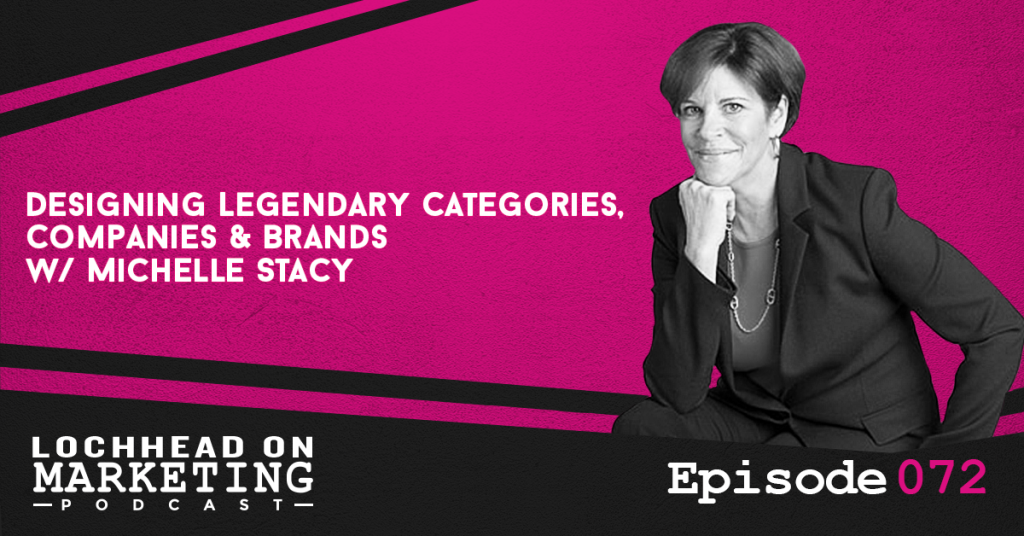
Podcast (lochheadonmarketing): Play in new window | Download (Duration: 52:15 — 35.9MB) | Embed
Subscribe: Apple Podcasts | Spotify | RSS | More
Today, Chris goes deep on how to design a legendary category, company product, and brand with his super special guest, Michelle Stacy. Michelle is a living consumer product marketing legend, honing her craft with brands such as Gilette, Oral B, Keurig, and now, HydraFacial.
Putting Consumers First
Michelle spent many years honing her craft at Gillette where she led Oral B. She launched a number of great new products including the Pulsar battery powered manual toothbrush. She was the President of Keurig from 2010 to 2014, where the business grew from less than $1 billion in revenue to 4.5 billion.
Through her leadership, she took Keurig from being a category-defining product to becoming — what we, in tech call — a platform. She did this when they started inviting in the competition to sell their coffee for Keurig machines. Additionally, she’s been a board member at iRobot, Coravin (a legendary wine preservation system), and Hydrafacial (Clint Carnell CEO on FYD #160)
“I think what always resonates with me is putting the consumer first and trying to think through ‘how do I make an emotional connection between what I want the consumer to buy and the product itself.’ To me, that’s where longevity happens around products. When you can get a consumer to fall in love with your product, then you have the opportunity, to as you would put it, become a Category King.” – Michelle Stacy
The Keurig Story
Michelle started working with Keurig in November 2008, more or less the onset of the global financial crisis. She found herself contemplating if she could ever push forward a premium-priced business given the financial crisis at that time. With consumers in mind and with the right launch plan, they successfully introduced a well-loved product.
“Keurig was actually the fifth single-serve company to market. They’re just the ones that got it right.” – Michelle Stacy
Creating Momentum
In this episode, Michelle walks us through the process of developing and launching Keurig machines. She mentions initially offering this to client-facing businesses, then slowly grew to every home through word of mouth. They also knew that customers do not like to be tied into a single brand of coffee, so they explored tying up with different coffee brands for their K-cups.
“In my DNA is the concept of looking at how you create value in every step of your environment so that you’re creating value for the consumer, you’re conveying value for the retailer, you’re creating value for your suppliers that are supplying you with the product. So as everyone benefits within an ecosystem, it creates momentum.” – Michelle Stacy
To know more about designing legendary categories and to know more about Michell Stacy, download and listen to this episode.
Bio:
Michelle is a strong leader whose personal and professional skills have developed over a 35-year career. Keurig, Gillette, and P&G have all benefited from her ability to develop and articulate a clear vision and strategy, build brands, and identify avenues for growth.
Michelle’s key to managing and driving exceptional growth has been her ability to create a positive and focused culture that generates high employee engagement, as well as talent for creating company-wide commitment to lead with a higher purpose.
A few of the brands that Michelle has impacted include:
The Gillette Series
Gillette Mach3
Oral-B
Oral-B Stages
Keurig
Links:
We hope you enjoyed this episode of Lochhead on Marketing™! Christopher loves hearing from his listeners. Feel free to email him, connect on Facebook, Twitter, Instagram, and subscribe on iTunes! You may also subscribe to his newsletter, The Difference, for some amazing content.
063 The Magic Triangle | Marketing PodStorm 25
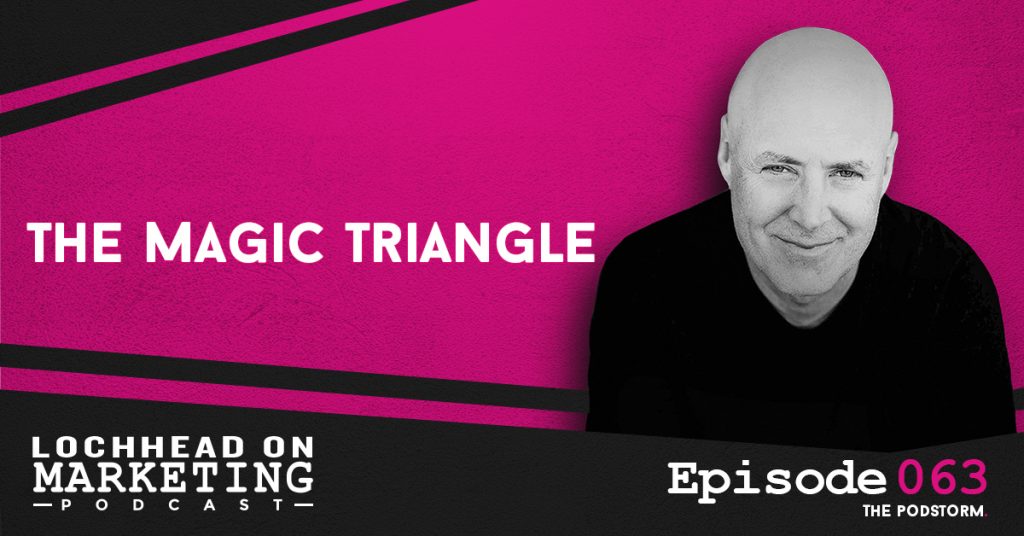
Podcast (lochheadonmarketing): Play in new window | Download (Duration: 9:01 — 6.2MB) | Embed
Subscribe: Apple Podcasts | Spotify | RSS | More
In this episode, let’s talk about the magic triangle — how the company, the product, and the category come together to make you the category queen or category king in your market category.
Product Design
Product design is the purposeful building of a product and an experience that solves a problem. Most companies, though, opt for a product-market fit. Christopher believes it a dangerous idea because it insinuates that there’s a market out there who would automatically consume whatever is offered to them.
“Typically what happens is: entrepreneurs start with a problem or something they’re working on or tinkering with, and they get obsessed with the thing. That of course, is the product.” – Christopher Lochhead
Company Design
Company design is the purposeful creation of a business model, and an organization with culture, a point of view that fits the category. In a recent episode of Christopher about BHAGs, you’ll see how a point of view with a big hairy audacious goal can come together and become a powerful motivator, driver, and unifier of culture.
“If you get category design, right, and you lock and load on a provocative point of view, that is deeply rooted in something you care about, such that you, your co-founders, your colleagues, your co-workers, the other executives in the company, etc. are on a mission centered around that point of view, it changes culture.” – Christopher Lochhead
Category Design
Category design is the mindful creation and development of a new market category. Successful category design will result in the consumers demanding the product from you and crowning you the queen.
“In marketing terms, category design is the ultimate air wars as distinct from ground wars. It’s about winning the war for public opinion. It’s about teaching the world to abandon something old and embrace something new. Category design builds the profile of the space while drawing attention to the company. Legendary companies market the category first and the company second.” – – Christopher Lochhead
To hear more about the magic triangle and specific examples for product, company, and category design, download and listen to this episode.
Bio:
Christopher Lochhead is a #1 Apple podcaster and #1 Amazon bestselling co-author of books: Niche Down and Play Bigger.
He has been an advisor to over 50 venture-backed startups; a former three-time Silicon Valley public company CMO and an entrepreneur.
Furthermore, he has been called “one of the best minds in marketing” by The Marketing Journal, a “Human Exclamation Point” by Fast Company, a “quasar” by NBA legend Bill Walton and “off-putting to some” by The Economist.
In addition, he served as a chief marketing officer of software juggernaut Mercury Interactive. Hewlett-Packard acquired the company in 2006, for $4.5 billion.
He also co-founded the marketing consulting firm LOCHHEAD; was the founding CMO of Internet consulting firm Scient, and served as head of marketing at the CRM software firm Vantive.
We hope you enjoyed this episode of Lochhead on Marketing™! Christopher loves hearing from his listeners. Feel free to email him, connect on Facebook, Twitter, Instagram, and subscribe on iTunes! You may also subscribe to his newsletter,The Difference, for some amazing content.

